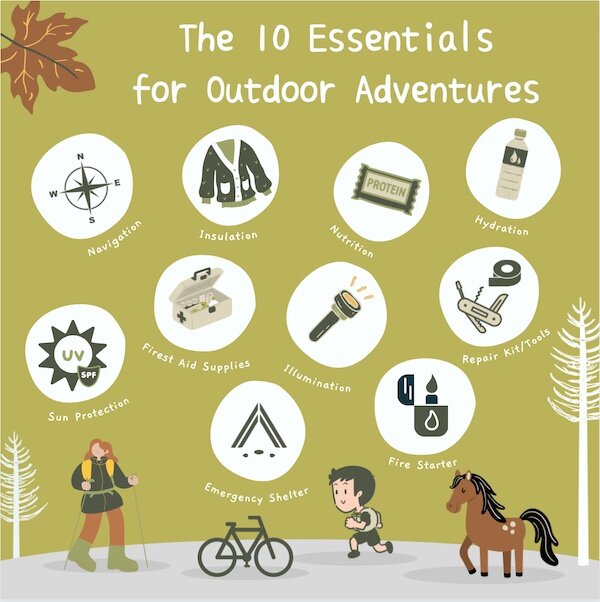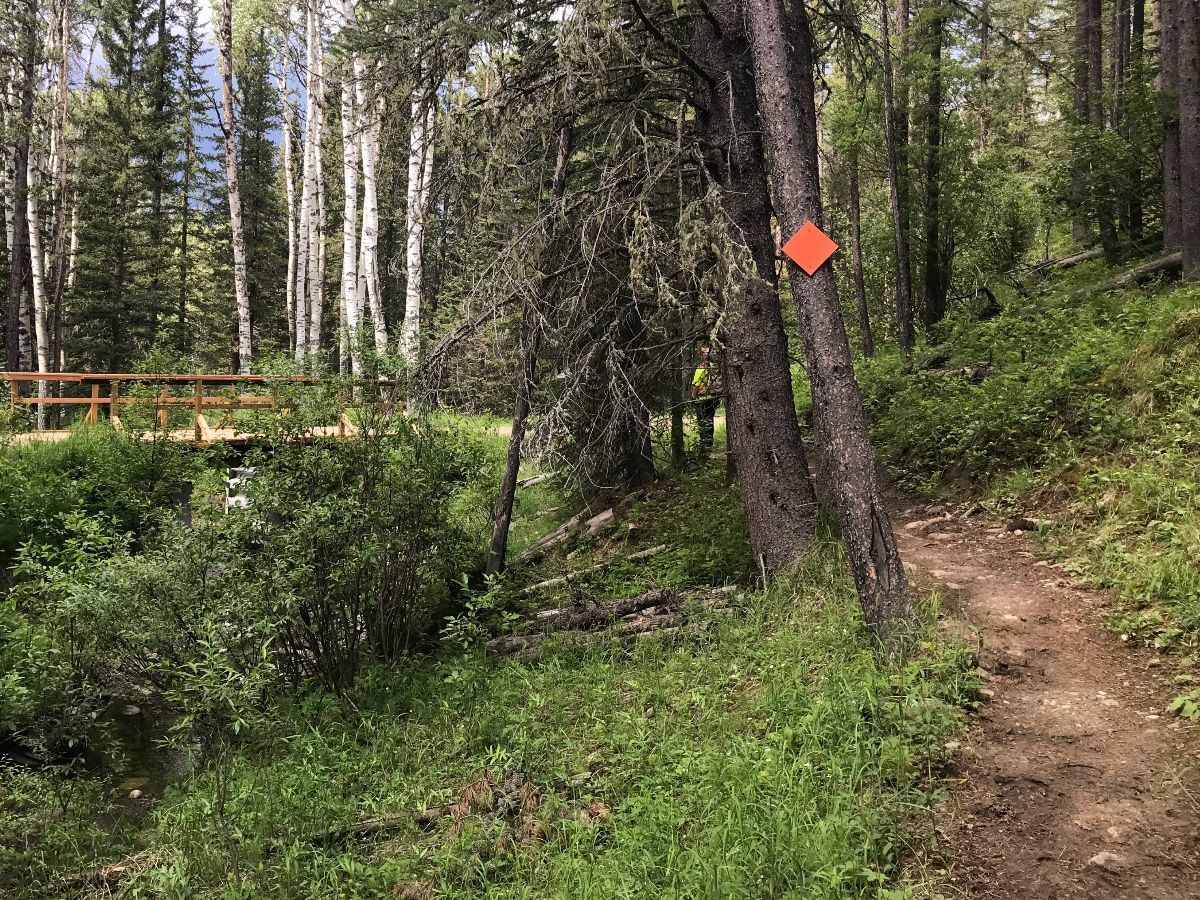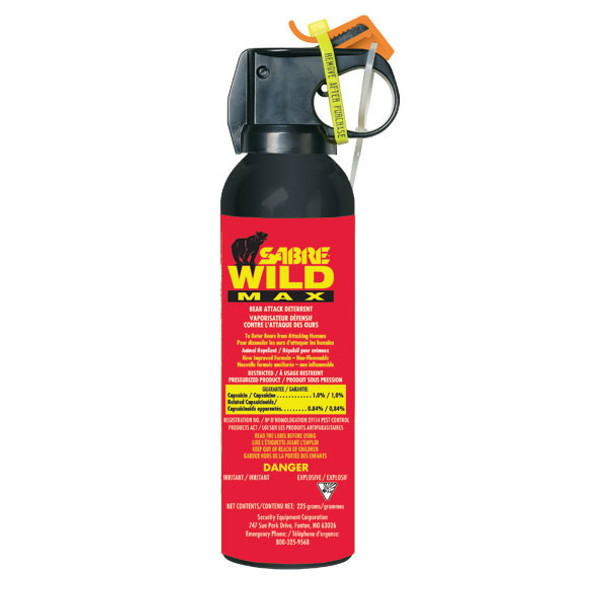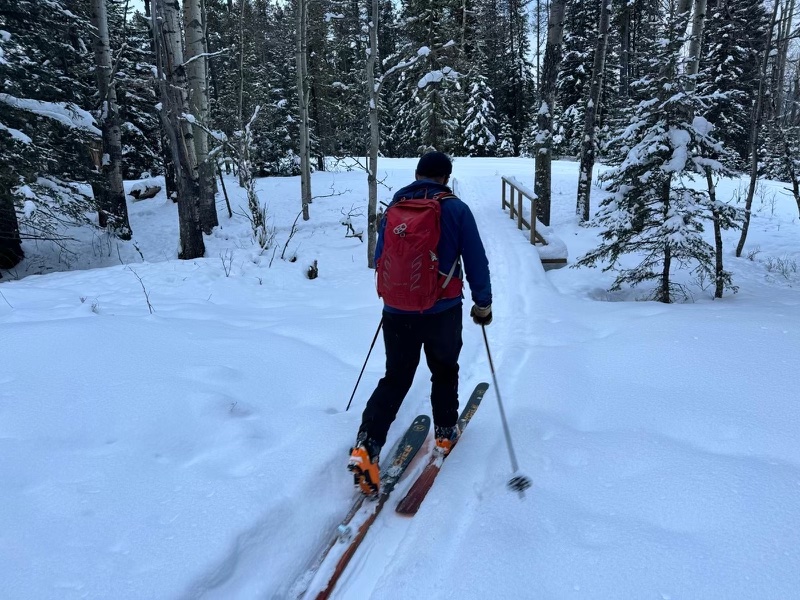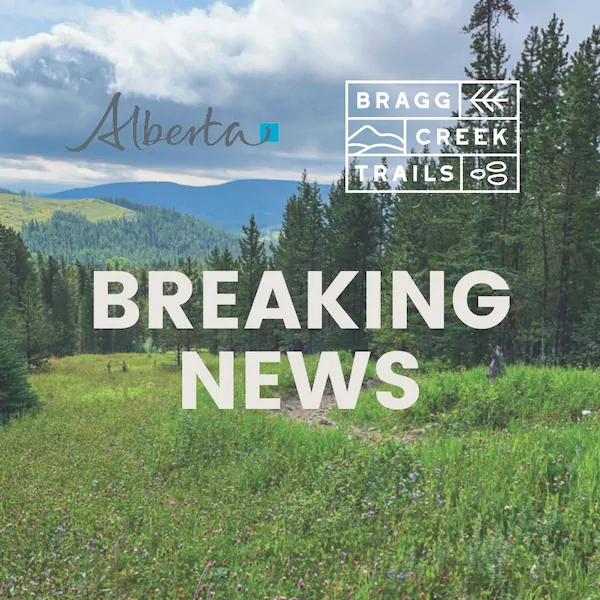Wondering what to pack for your next outdoor adventure? Even if you’re only planning to be out for a few hours on a day-trip, it’s important to pack some essential items. Weather can change quickly outdoors, especially in the mountains, and something as minor as a sprained ankle could mean you’re out longer than expected.
This list assumes you’re already wearing appropriate clothing and footwear for the day’s activities and are carrying a comfortable backpack.
These items are not get out of jail free cards, but can make an unplanned, extended stay more manageable. Remember, this is not an exhaustive list and should be adapted for the weather, season, and activity.
1. Navigation
Bring a map and compass and know how to use them. Even if you carry a GPS, it’s important to know how to navigate via map and compass. Handheld GPS devices can be negatively affected by cloud-cover, weather, and battery life.
2. Nutrition
Getting hangry is never fun, especially if you’re delayed or are dealing with an emergency situation. Bring extra food, more than you think you’ll need, just in case things don’t go exactly as planned.
3. Hydration
Carrying sufficient water is very important, but it’s always a good idea to bring more than you think you’ll need (although that varies depending on season and activity level). Drinking from natural sources (i.e. lakes and rivers) isn’t recommended, so having something to treat water, like tablets or filters, is encouraged, especially on longer/multi-day outings.
4. Sun Protection
This item is often overlooked in the winter, but snow can reflect up to 80% of the sun’s UV rays, meaning it’s still important to carry sunscreen on your winter adventures. Other items to consider are sunglasses, a wide-brimmed hat, and lip balm with SPF.
5. Insulation
Always carry extra clothing with you. Hypothermia can set-in quickly, especially if you’re wearing damp/wet clothing. An extra pair of dry socks, gloves/mitts, a toque, and a mid-layer can make a huge difference. It’s also important to have weather-proof outer layers with you.
6. Illumination
Everyone in your group should be carrying an LED headlamp, flashlight, or bike light with spare batteries. An unexpected delay could keep you out past sundown, and the days are noticeably shorter during shoulder season and over the winter. A headlamp will keep your hands free for other tasks. Remember, the flashlight on your smartphone is not an acceptable substitute. The light just isn’t bright enough when you’re outdoors, plus it uses precious battery life during an emergency situation.
7. First Aid Supplies
The size and contents of your first aid kit depends on the number of people in your group, the length of your trip, how far you’re going, and the level of risk you expect to encounter. Ensure all contents are restocked and not expired. It’s also worth mentioning that the contents in your kit are only as good as the person using them. In other words, if you have items in your kit that you don’t know how to use then they won’t be much good to you in the event of an emergency. Taking a wilderness-specific first aid course is an excellent idea for anyone spending time outdoors.
8. Fire Starter
Matches, either waterproof or in a waterproof container, or a lighter combined with a fire starter can be invaluable in an emergency situation.
9. Repair Kit and Tools
This ‘item’ is really dependent on the activity that you’re doing. If you’re mountain biking your needs will look different than if you’re cross-country skiing. Carrying a multi-tool and duct tape is an excellent start and then adjusting your kit as needed is a great way to operate.
10. Emergency Shelter
Obviously, if you’re on a multi-day excursion you’ve already got a tent and sleeping bag. But if you’re just out for the day, carrying something such as a tarp, an emergency blanket, an emergency bivy, or even some large plastic bags will help protect you from the elements. They’ll allow you to crawl inside and will help you stay warm and dry.
Bonus Items:
11. Communication Device
Most of us carry our smartphones everywhere these days. They are the perfect pocket-sized camera and can track our fitness/distance metrics. It’s recommended to bring your fully-charged phone, but use it sparingly so you’ll have enough battery life in the event of an emergency. You could also bring a small battery-pack to recharge your phone as needed. A whistle also lasts a lot longer than your voice if you’re calling out for help. For remote terrain outside of cell coverage, you might want to think about investing in a satellite communication device, such as a Spot or InReach, that will let you send a message or call for help during an emergency.
12. Bear Spray
I consider this item essential whenever you’re adventuring in bear country. Studies have shown it’s the most effective method for deterring a bear encounter on the market. It’s important to keep it accessible (i.e. never in your backpack) and know how to use it in the event of an encounter. Don’t let the name fool you either, the spray can be just as effective on coyotes, cougars, wolves, elk, and other wildlife.



